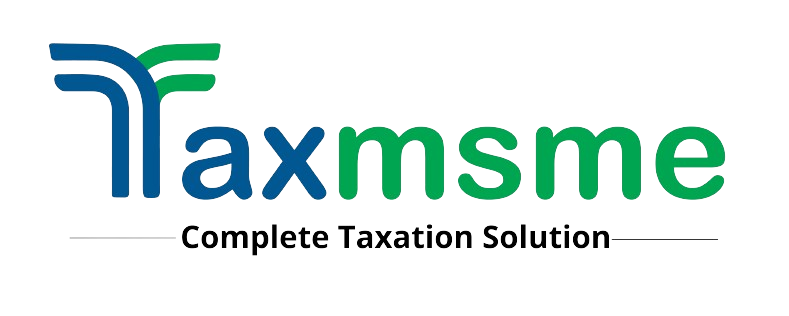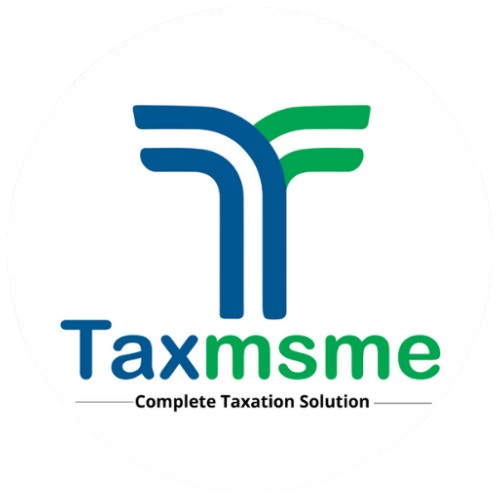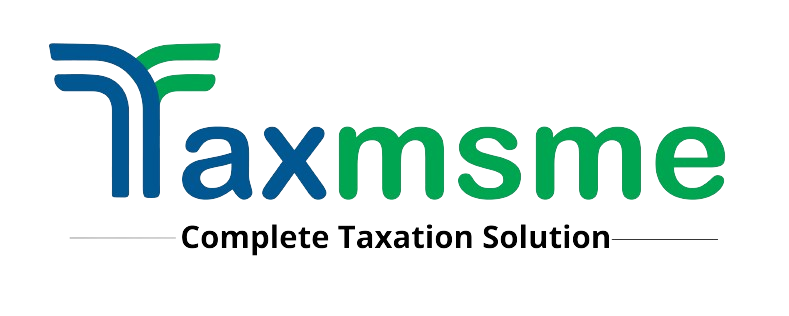What is GST e-Invoicing?
GST e-invoicing doesn’t mean generating invoices on the GST portal itself. Instead, it’s a process that involves submitting the details of a GST-compliant invoice, generated by the supplier, to the government’s Invoice Registration Portal (IRP). Upon successful submission, the IRP generates an Invoice Reference Number (IRN), digitally signs the invoice, and returns it to the supplier. This entire process ensures interoperability between different accounting systems and significantly reduces the scope for data entry errors, which have historically been a major source of discrepancies and delays in the taxation system. For more details, you can refer to this GST e-invoicing overview. E-invoicing also plays a crucial role in curbing fraudulent practices and broadening the tax base, contributing to a more robust and transparent economic environment.
Key Components of GST e-Invoicing
The GST e-invoicing system comprises several key components that work together to ensure its smooth functioning:
- Invoice Registration Portal (IRP): The government-authorized portal is the central hub of the e-invoicing system. It’s responsible for receiving invoice data, validating it, generating the IRN, and digitally signing the e-invoice. There are multiple IRPs to handle the volume of invoices generated across the nation. You can find more information about IRP on the official government website of the GST Portal.
- Invoice Reference Number (IRN): A unique 64-character hash generated by the IRP for each e-invoice. This IRN serves as the unique identifier for the invoice within the GST ecosystem, ensuring that each invoice can be tracked and verified throughout its lifecycle.
- GST Invoice: A standard tax invoice containing specific details as prescribed under the GST laws. These details include supplier and recipient information, goods/services description, tax rates, and amounts. Accuracy and completeness of these details are paramount for e-invoice compliance, ensuring smooth transactions and regulatory adherence. For detailed guidelines on GST invoice, you can refer to the official CBIC (Central Board of Indirect Taxes and Customs) website.
- Digital Signature: The IRP’s digital signature on the e-invoice provides authentication and ensures that the invoice data has not been tampered with during transmission. This adds a layer of security and legal validity to the e-invoice, bolstering trust in the system. Information on Digital Signature can be found on government portals like the National Informatics Centre (NIC).
- QR Code: The IRP generates a QR code containing key invoice details. This QR code allows for quick verification of the invoice by tax officials and other stakeholders, using a mobile app. The QR code also facilitates easier reconciliation for businesses, streamlining their accounting processes. You can read more about QR code benefits in GST e-invoicing in various reports and articles online, such as this report on GST QR Code.
Benefits of GST e-Invoicing
GST e-invoicing offers a wide range of benefits for businesses, tax authorities, and the overall economy:
- Reduced Data Entry Errors: By automating the process of invoice data transfer, e-invoicing minimizes the chances of manual data entry errors. This leads to fewer discrepancies, reduced reconciliation problems, and more accurate financial reporting. This ultimately saves time and resources for businesses, allowing them to focus on core operations.
- Real-time Tracking: E-invoicing enables tax authorities to track invoices in real-time. This improves compliance, reduces the potential for tax evasion, and allows for more efficient tax administration. It also helps in identifying and addressing tax leakages, contributing to increased government revenue.
- Faster Input Tax Credit (ITC) Claims: The streamlined process of e-invoicing facilitates faster verification of invoices, which in turn leads to quicker processing of Input Tax Credit (ITC) claims. This improves cash flow for businesses and reduces working capital requirements, enhancing their financial stability. You can find more details on ITC claims on the GST website.
- Improved Efficiency: Automation of the invoicing process saves significant time and resources for businesses. It reduces the need for manual data entry, paper-based processes, and physical storage of invoices. This allows businesses to focus on their core competencies and strategic growth initiatives.
- Standardization: E-invoicing enforces a standard format for invoices across different businesses and industries. This improves interoperability between different accounting systems and makes it easier to exchange invoice data. Standardization also promotes uniformity and clarity in transactions, reducing ambiguity and disputes.
- Reduced Fraud: E-invoicing helps to curb tax evasion and fraudulent activities by creating an audit trail of all transactions. The real-time tracking of invoices makes it more difficult to manipulate or falsify records. This enhances the integrity of the GST system and promotes fair competition.
- Enhanced Interoperability: E-invoices can be easily exchanged between different systems, regardless of the software or platform used by the buyer and seller. This simplifies business transactions and reduces the cost of compliance. It also promotes seamless communication between businesses and their trading partners.
- Automation of Returns Filing: E-invoicing simplifies GST returns filing, as much of the invoice data is automatically populated from the IRP. This reduces the effort and time required for filing returns and improves accuracy, minimizing the risk of errors and penalties. For more information on GST returns filing, please refer to the official GST portal.
Applicability of GST e-Invoicing
E-invoicing is not universally applicable to all businesses. It is mandatory for businesses with an aggregate turnover exceeding a specified threshold in any preceding financial year from 2017-18 onwards. The threshold has been progressively lowered over time, starting from Rs. 500 crore and gradually decreasing. It’s essential to refer to the latest government notifications issued by the Central Board of Indirect Taxes and Customs (CBIC) for the most up-to-date threshold. As of recent notifications, the threshold is applicable to those with an annual aggregate turnover exceeding Rs. 5 crore. However, the government has indicated its intention to further reduce this threshold in the future, bringing more businesses under the ambit of e-invoicing. Certain categories of transactions are currently exempt from e-invoicing, including B2C (business-to-consumer) transactions, imports, and specific types of services. It’s important for businesses to regularly check for updates on applicability to ensure compliance.
Process of Generating e-Invoices
The process of generating e-invoices involves a series of steps:
- Generate Invoice: The supplier generates a GST-compliant invoice using their existing accounting/ERP (Enterprise Resource Planning) system. It’s crucial to ensure that the invoice contains all the mandatory fields as specified under the GST rules. The accounting/ERP system should be capable of generating invoices in the prescribed format to ensure compatibility with the IRP.
- Upload to IRP: The supplier uploads the relevant invoice data to the IRP. This is typically done in the prescribed JSON (JavaScript Object Notation) format. There are different methods for uploading, including direct API integration, GSP (GST Suvidha Provider) integration, and offline tools. Businesses can choose the method that best suits their IT infrastructure and technical capabilities.
- IRN Generation: The IRP validates the uploaded data. If the data is valid, the IRP generates a unique Invoice Reference Number (IRN). The IRN is crucial for the further processing and tracking of the e-invoice within the GST ecosystem.
- Digital Signature and QR Code: The IRP digitally signs the e-invoice and adds a QR code containing key invoice details. The digital signature provides authenticity and legal validity, and the QR code facilitates quick verification by tax officials and other stakeholders.
- Download e-Invoice: The supplier can then download the digitally signed e-invoice, which now includes the IRN and the QR code. This downloaded e-invoice is the final, authenticated document that can be shared with the buyer and used for record-keeping.
- Share with Buyer: The supplier shares the e-invoice with the buyer through their usual business channels (e.g., email, portal). Timely sharing of the e-invoice is essential for smooth business transactions and maintaining good relationships with trading partners.
Challenges and Considerations
While e-invoicing offers numerous benefits, businesses may also face some challenges and need to consider certain factors:
- System Integration: Integrating existing accounting systems with the IRP can be complex, especially for businesses using older software. This may require significant IT investment and technical expertise. Businesses may need to upgrade their systems or invest in middleware solutions to ensure seamless integration.
- Technical Issues: Like any technology-driven system, e-invoicing is susceptible to technical glitches, network downtime, and server errors. These issues can disrupt business operations and require robust contingency plans. Businesses should have backup systems and processes in place to minimize disruptions.
- Training: Businesses need to provide adequate training to their staff on the new e-invoicing process, including how to generate e-invoices, upload data to the IRP, and handle any errors or exceptions. Effective training is crucial for smooth implementation and adoption across the organization.
- Compliance: Ensuring ongoing compliance with the evolving e-invoicing norms is essential. The government may introduce changes to the rules, formats, or thresholds, and businesses must stay updated to avoid penalties. Businesses should regularly monitor official sources like the GSTN website and CBIC notifications for updates.
- Data Security: Businesses need to ensure the security and confidentiality of their invoice data during transmission and storage. This requires implementing appropriate security measures, such as encryption and access controls. Robust data security practices are essential to protect sensitive information and comply with data protection regulations.
- Scalability: As the volume of e-invoices increases, businesses need to ensure that their systems can handle the load. This may require upgrading hardware, software, or network infrastructure. Scalability is crucial for handling future growth and ensuring the system can accommodate increasing transaction volumes.
Recent Updates and Developments
The GST e-invoicing system is dynamic, and the government periodically issues notifications with updates and clarifications. These updates may include changes to:
- Applicability criteria: Changes in the aggregate turnover threshold for mandatory e-invoicing, potentially bringing more businesses into its scope.
- New features: Introduction of new functionalities on the IRP, such as enhanced reporting capabilities or improved user interface, to improve the user experience.
- Technical specifications: Updates to the e-invoice schema, data formats, or API specifications, to ensure compatibility and standardization.
- Exemptions: Changes to the categories of transactions or businesses that are exempt from e-invoicing, which businesses need to be aware of.
Businesses must stay informed about these changes through official sources like the GSTN website and CBIC notifications to ensure continued compliance and adapt to the evolving regulatory landscape.
Impact on Different Business Sectors
E-invoicing has had a significant impact on various sectors of the Indian economy:
- Manufacturing: Streamlined supply chain management, faster movement of goods, and quicker processing of ITC claims. E-invoicing has improved efficiency and reduced costs in the manufacturing sector, enhancing its competitiveness. For industry-specific insights, you can check reports from the Ministry of Statistics and Programme Implementation (MOSPI).
- Retail: Improved inventory management, reduced reconciliation issues, and better control over sales and purchase transactions. E-invoicing has brought greater transparency and accountability to the retail sector, fostering trust among stakeholders. You can find more information on the retail sector’s best practices on the Department of Consumer Affairs website.
- Services: Enhanced transparency, reduced the risk of disputes related to invoicing, and simplified billing processes. E-invoicing has facilitated smoother transactions in the services sector, promoting efficiency and reducing administrative burdens. For information on the performance of the service sector, refer to reports published by the Reserve Bank of India (RBI).
- Logistics: Faster movement of goods due to quicker invoice processing, reduced delays at checkpoints, and improved efficiency in the transportation sector. E-invoicing has contributed to a more efficient logistics ecosystem, reducing transportation costs and improving delivery times. You can find reports on the logistics industry on the Ministry of Road Transport and Highways website.
- E-commerce: Facilitated smoother transactions, improved reconciliation between online platforms and sellers, and enhanced transparency in online sales. E-invoicing has supported the growth of e-commerce in India, fostering a more organized and compliant online marketplace. For more details on e-commerce, you can check reports by the Department for Promotion of Industry and Internal Trade (DPIIT).
GST E-Invoicing and TaxMSME
TaxMSME, a brand of Crestpoint Ventures, specializes in providing GST services, including comprehensive guidance and support on e-invoicing. TaxMSME recognizes that the transition to e-invoicing can be particularly challenging for small and medium-sized enterprises (MSMEs), which may lack the resources and expertise to implement the necessary systems and processes. As part of Crestpoint Ventures, TaxMSME is dedicated to simplifying this process for businesses.
Here’s how TaxMSME assists businesses with e-invoicing:
- Understanding Regulations: TaxMSME helps businesses understand the intricacies of e-invoicing regulations, including applicability criteria, procedures, and compliance requirements. TaxMSME provides clarity on e-invoicing rules and ensures businesses understand their obligations.
- Implementing Systems: TaxMSME assists businesses in implementing the necessary systems and software for generating and uploading e-invoices, ensuring seamless integration with their existing accounting systems. TaxMSME supports seamless e-invoicing system integration, minimizing disruption to business operations.
- Training and Support: TaxMSME provides training and ongoing support to businesses, empowering their staff to manage the e-invoicing process effectively. TaxMSME offers comprehensive training and support to equip businesses with the knowledge and skills they need.
- Compliance Assurance: TaxMSME helps businesses ensure ongoing compliance with e-invoicing norms, minimizing the risk of penalties and audits. TaxMSME ensures ongoing e-invoicing compliance, providing businesses with peace of mind.
- GST Filing: TaxMSME can help in GST return filing, further simplifying the compliacne process for businesses.






